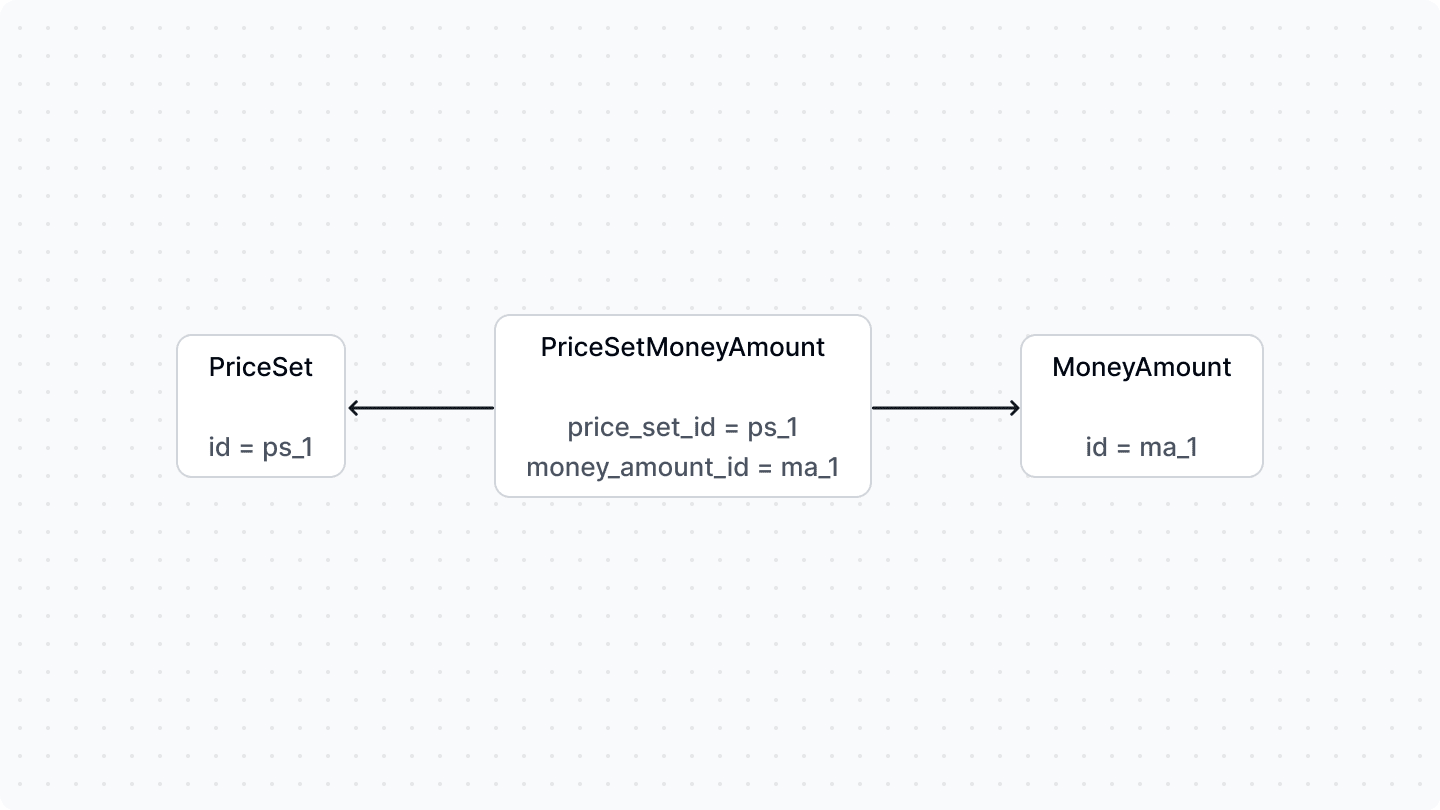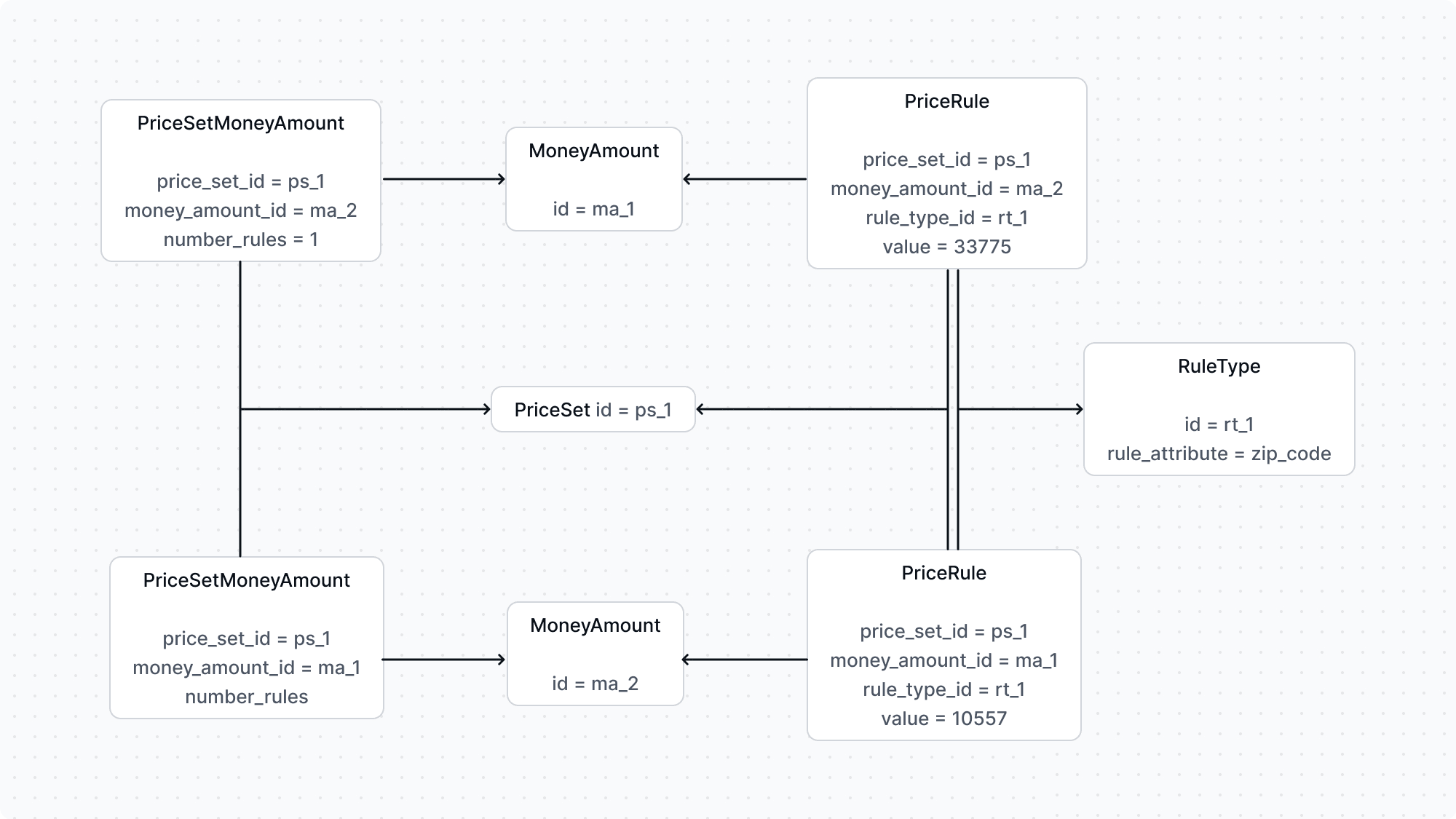Pricing Concepts
In this document, you’ll learn about the main concepts in the Pricing module, and how data is stored and related.
Money Amount
A MoneyAmount represents a price.
Money amounts can be conditioned by the min_quantity and max_quantity attributes, which are helpful when calculating the price for a specific quantity.
If a money amount has its min_quantity or max_quantity attributes set, they’re only considered for the price calculation if they have a lower min_quantity or a higher max_quantity than the quantity specified for calculation.
Price Set
A PriceSet represents a collection of money amounts that are linked to a resource (for example, a product or a shipping option). The Price Set and Money Amount relationship is represented by the PriceSetMoneyAmount entity.

Prices with Rules
Rule Type
Each money amount within a price set can be a price that’s applied for different conditions. These conditions are represented as rule types.
A RuleType defines custom conditions. Each rule type has a unique rule_attribute, referenced in rule values, such as when setting a rule of a money amount.
Price Rule
Each rule of a money amount within a price set is represented by the PriceRule entity, which holds the value of a rule type. The PriceSetMoneyAmount has a number_rules attribute, which indicates how many rules, represented by PriceRule, are applied to the money amount.

For example, you can create a zip_code rule type. Then, a money amount within the price set can have the rule value zip_code: 10557, indicating that the money amount can only be applied within the 10557 zip code.
Each money amount within the price set can have different values for the same rule type.
For example, this diagram showcases two money amounts having different values for the same rule type:

Each money amount can have multiple rules applied to it as well.
For example, a money amount can have the rules zip_code and region_id applied to it. In this case, the value of each rule is represented by a PriceRule.

PriceSetRuleType
The PriceSetRuleType entity indicates what rules the money amounts can have within a price set. It creates a relation between the PriceSet and RuleType entities.
For example, to use the zip_code rule type on a money amount in a price set, the rule type must first be enabled on the price set through the PriceSetRuleType.

Price List
A PriceList is a group of prices only enabled if their rules are satisfied. A price list has optional start_date and end_date attributes, which indicate the date range in which a price list can be applied.
Its associated prices are represented by the PriceSetMoneyAmount entity, which is used to store the money amounts of a price set.
Each rule that can be applied to a price list is represented by the PriceListRule entity. The number_rules attribute of a PriceList indicates how many rules are applied to it.
Each rule of a price list can have more than one value, representing its values by the PriceListRuleValue entity.

Use Case Example: Pricing and Product Modules
In a real use case, you would use the pricing module with your custom logic or other Medusa Commerce Modules, such as the Product Module.
When used with the Product Module, a product variant’s prices are stored as money amounts belonging to a price set. A relation is formed between the ProductVariant and the PriceSet when the modules are linked.

So, when you want to add prices for a product variant, you create a price set and add the prices as money amounts to it. You can then benefit from adding rules to prices or using the calculatePrices method to retrieve the price of a product variant within a specified context.